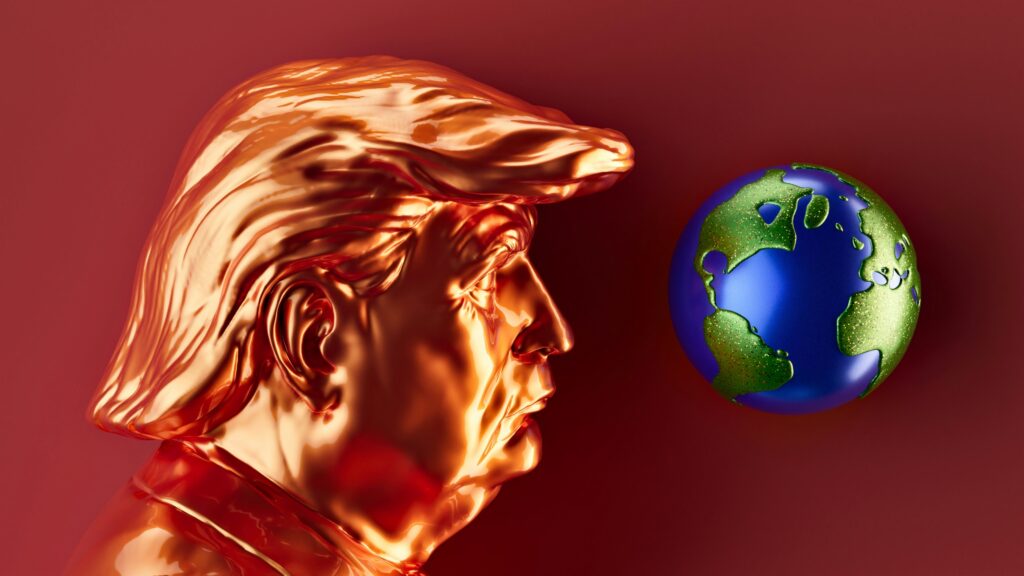Understanding Trade Wars
Trade wars disrupt global economies by imposing tariffs and barriers. Economies shift, and new trade patterns emerge.
What Is a Trade War?
A trade war involves two or more countries raising tariffs or imposing trade restrictions. These measures aim to protect domestic industries but often escalate tensions.
Governments use tariffs, quotas, and subsidies as weapons. In return, affected countries retaliate. Trade wars can lead to decreased international trade and increased consumer prices.
Historical Examples of Trade Wars
Several notable trade wars have occurred. The Smoot-Hawley Tariff Act of 1930 raised U.S. tariffs on over 20,000 imported goods, leading to retaliatory tariffs from other countries and a deepening of the Great Depression.
Another example is the U.S.-China trade war starting in 2018, where both nations imposed tariffs on billions of dollars’ worth of goods, impacting global markets.
These historical examples highlight how trade wars alter economies, disrupt industries, and cause long-term consequences.
Causes of Trade Wars
Understanding the causes of trade wars helps unravel their complex nature. I’ll explore two primary drivers: economic factors and political motivations.
Economic Factors
Several economic factors can initiate trade wars.
- First, trade imbalances drive countries to impose tariffs to reduce deficits. For example, the U.S. targeted China’s surplus with tariffs beginning in 2018.
- Second, protecting domestic industries is essential, especially in industries like steel and automotive. Countries raise barriers to shield local businesses from international competition.
- Third, currency manipulation, where a country devalues its currency to boost exports, can provoke retaliatory measures.
- Lastly, technological advancements and the competition for technological supremacy lead nations to implement trade restrictions to safeguard intellectual property and maintain competitiveness.
Political Motivations
Political motivations also play a crucial role in sparking trade wars. Nationalism influences trade policies as governments seek to protect national interests.
For instance, political leaders may impose tariffs to project strength and gain public support. Electoral cycles and the need to fulfill campaign promises can lead to protectionist measures.
Geopolitical conflicts and strategic alliances add another layer, where countries impose sanctions or trade restrictions to exert political pressure.
Additionally, shifts in global political landscapes, like the ascension of populist leaders, often correlate with the outbreak of trade wars.
By examining these economic factors and political motivations, it’s clear why trade wars are multifaceted with substantial impacts on global economies.
Consequences of Trade Wars

Trade wars significantly affect global and domestic economies. These conflicts trigger disruptions that can cascade across various sectors.
Impact on Global Markets
Trade wars disrupt established trade routes, leading to global market volatility. Tariffs increase import costs, making goods more expensive and less competitive.
For instance, the U.S.-China trade war led to substantial shifts in supply chains, compelling companies to seek alternative manufacturing bases to avoid tariffs.
This instability can reduce investor confidence, causing stock market declines. Additionally, retaliatory tariffs create tit-for-tat dynamics, further straining international relations and increasing economic uncertainty.
Effects on Domestic Economies
On the domestic front, trade wars lead to higher production costs due to increased prices on imported raw materials. Businesses transfer these costs to consumers, driving up prices and reducing purchasing power.
For example, U.S. manufacturers reliant on Chinese aluminum faced higher costs, impacting their profitability and pricing strategies.
In agriculture, tariffs on exports like soybeans reduced farmers’ revenues, as markets like China turned to other suppliers.
Job losses may occur in industries heavily reliant on affected trade, disrupting local economies and potentially leading to higher unemployment rates.
Major Trade Wars in Recent History
Trade wars have significantly shaped the global economy, creating notable disruptions and prompting strategic shifts in trade policies.
US-China Trade War
The US-China trade war, starting in 2018, marked a significant escalation in trade tensions between two of the world’s largest economies.
The US imposed tariffs on hundreds of billions of dollars worth of Chinese imports, citing unfair trade practices.
In retaliation, China targeted a range of US goods, including soybeans, automobiles, and chemicals, with tariffs.
- Tariffs and Trade Barriers: The US imposed tariffs up to 25% on Chinese products, affecting consumer electronics and machinery. China’s counter-tariffs impacted key US export sectors.
- Economic Impact: The trade war led to reduced trade volumes between the two nations, supply chain disruptions, and increased costs for businesses reliant on cross-border trade. According to the IMF, the trade conflict reduced global GDP growth by approximately 0.5% in 2019.
- Strategic Shifts: Companies diversified supply chains away from China, seeking alternatives in Southeast Asia and other regions. This realignment aimed to mitigate risks from potential future conflicts.
Other Notable Trade Conflicts
Numerous other trade conflicts have impacted global economies, each with unique causes and effects.
- EU-US Trade Disputes: The European Union and the United States have experienced multiple trade disputes, including disagreements over Airbus-Boeing subsidies. The WTO authorized the US to impose tariffs on $7.5 billion worth of EU goods in 2019, leading to European retaliatory measures on US products.
- Japan-South Korea Trade Conflict: In 2019, Japan imposed export controls on materials crucial for South Korea’s tech industry, citing national security concerns. South Korea responded by removing Japan from its preferred trading partners list, straining bilateral relations.
- NAFTA Renegotiation: The renegotiation of NAFTA, now known as the USMCA (United States-Mexico-Canada Agreement), addressed issues like auto manufacturing rules and digital trade. The revised agreement aimed to create more balanced and reciprocal trade between the member countries.
These trade conflicts illustrate the diverse and far-reaching impact of trade wars, influencing economic strategies, national policies, and international relations across the globe.




